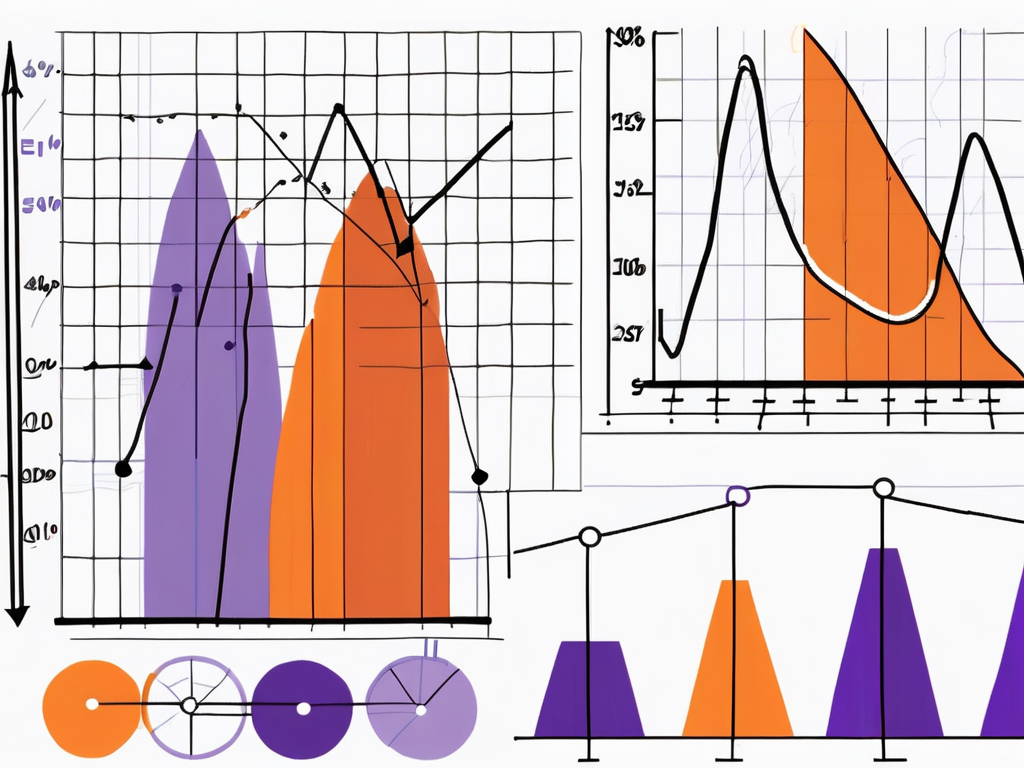Inventory management is a critical aspect of any business operation. And when it comes to analyzing inventory, two methods stand out: VED Analysis and SDE Analysis.
These techniques are like the Batman and Robin of inventory management, each with their own unique strengths and capabilities. In this article, we will explore:
- The basics of VED and SDE analysis
- Differences between VED and SDE analysis
- How to apply these analyses in business
Table of Contents
ToggleVED Analysis: What Is It, How It’s Used, Benefits, and More
The concept of VED Analysis revolves around categorizing inventory items based on their criticality and availability. V, E, and D stand for Vital, Essential, and Desirable, respectively. Vital items are crucial for the smooth operation of a business, whose stockouts can lead to catastrophic consequences. Essential items are important but can be substituted or managed temporarily. Desirable items, on the other hand, are optional and provide additional convenience but are not crucial for operations. For businesses managing large inventories, 3PL services in the USA can help optimize storage, tracking, and fulfillment to maintain efficient stock levels.
The Concept of VED Analysis
VED Analysis provides business owners and inventory managers with a clear understanding of which items require immediate attention and prioritization. By categorizing inventory items into V, E, and D, businesses can allocate resources efficiently and ensure a smooth supply chain flow. It’s like having a superhero’s utility belt, equipped with the right tools for the right situations.
Key Components of VED Analysis
When conducting VED Analysis, several factors come into play. One of the crucial components is the impact on production or operations in case of stockouts. It also considers the cost or investment associated with each item and the lead time required for replenishment. By taking into account these key components, businesses can devise effective inventory management strategies tailored to their specific needs.
The Role of VED Analysis in Inventory Management
VED Analysis acts as a compass that guides businesses in their inventory management journey. Partnering with 3PL services in the USA can further optimize storage and fulfillment strategies for critical inventory. It helps identify the critical items that demand close monitoring and swift action. With VED Analysis, inventory managers can:
- Anticipate potential risks
- Plan ahead
- Stay one step ahead of any inventory-related mishap
Imagine a scenario where a manufacturing company relies heavily on a specific machine part to produce its flagship product. This part falls under the “Vital” category in the VED Analysis. Without it, the production line would come to a screeching halt, resulting in significant financial losses and a tarnished reputation.
By recognizing the criticality of this item through VED Analysis, the company can ensure that it always maintains an adequate stock level, minimizing the risk of stockouts and ensuring uninterrupted production.
On the other hand, let’s consider a “Desirable” item in the VED Analysis, such as a fancy office chair. While having comfortable seating options for employees is important, it does not directly impact the core operations of the business. By categorizing it as “Desirable,” the company can prioritize its spending and allocate resources to more critical areas, such as purchasing essential raw materials or investing in advanced machinery.
SDE Analysis 101
SDE Analysis, on the other hand, focuses on categorizing inventory items based on their scarcity, demand, and lead time. S, D, and E stand for Scarce, Desirable, and Easy to obtain, respectively. It’s like sorting items based on their popularity among customers and how easily accessible they are.
Understanding the Basics of SDE Analysis
SDE Analysis helps businesses answer the age-old question of supply and demand. It categorizes items based on their scarcity, indicating that these items are limited in quantity or difficult to procure. The desirable items are those that customers crave, while the easy-to-obtain items are readily accessible and abundant.
The Importance of SDE Analysis in Supply Chain
SDE Analysis plays a crucial role in the efficient management of a supply chain, helping businesses forecast demand and manage reverse logistics efficiently to minimize waste and optimize returns. Businesses can optimize their procurement strategies by breaking down inventory items into:
- Scarce
- Desirable
- Easy-to-obtain categories
They can take advantage of the scarcity to create an air of exclusivity, gauge customer demand accurately, and streamline the supply chain to meet their customers’ needs and wants. Businesses looking to optimize product selection should explore best practices for effective SKU rationalization to manage inventory efficiently.
Now, let’s shift our focus to the desirable items. These are the products that customers simply can’t resist. Whether it’s the latest tech gadget or a trendy fashion accessory, desirable items have a strong appeal that drives consumer behavior.
Businesses that understand the desirability factor can capitalize on it by creating targeted marketing campaigns and ensuring a steady supply to meet the demand. By staying ahead of the curve and offering what customers truly desire, businesses can gain a competitive edge in the market.
The Elements of SDE Analysis
SDE Analysis encompasses various elements that help businesses gauge the desirability, scarcity, and accessibility of inventory items. It takes into account:
- Market trends
- Customer preferences
- Supplier capabilities
By considering these elements, businesses can make informed decisions and adapt their supply chain processes accordingly. Implementing real-time inventory tracking can further enhance supply chain responsiveness and reduce stockouts. It’s the compass that points businesses in the right direction to ensure a seamless and satisfactory customer experience.
When it comes to assessing accessibility, businesses must consider factors such as lead time and availability. Easy-to-obtain items are like the backbone of a supply chain, ensuring a smooth flow of goods. These items are readily available, allowing businesses to meet customer demands efficiently. By understanding the accessibility of inventory items, businesses can plan their procurement and production schedules effectively, minimizing delays and maximizing customer satisfaction.
VED vs. SDE: Ultimate Comparison
Now that we’ve explored the individual capabilities of VED and SDE Analysis, let’s compare the two and understand when to use each method.

When it comes to inventory management, businesses need to carefully consider the methods they use to optimize their processes. VED and SDE Analysis are two powerful techniques that can help businesses achieve this goal. While they differ in their categorization criteria, they share the common objective of streamlining inventory management and ensuring a smooth supply chain flow.
Similarities Between VED and SDE Analysis
Although VED and SDE Analysis differ in their categorization criteria, they share the common goal of optimizing inventory management. Both methods help businesses identify and prioritize items based on specific criteria, guiding businesses towards efficient resource allocation and ensuring a steady supply chain flow.
With VED Analysis, businesses can focus on criticality and availability. This method is particularly useful for industries where the mismanagement of critical inventory items can have severe consequences. By categorizing items based on their criticality, businesses can allocate resources effectively and ensure that essential items are always available when needed.
On the other hand, SDE Analysis delves into scarcity, demand, and accessibility. This method is more suitable for businesses that operate in industries driven by customer demand and trends. By analyzing the scarcity of certain items and understanding customer preferences, businesses can stay ahead of the competition and enhance customer satisfaction.
Distinct Differences Between VED and SDE Analysis
While VED Analysis focuses on criticality and availability, SDE Analysis delves into scarcity, demand, and accessibility. VED Analysis is ideal for businesses operating in sectors where critical inventory items can have dire consequences if not managed properly.
On the other hand, SDE Analysis is more suitable for businesses that thrive on customer demand and trends, enabling them to stay ahead of the competition and enhance customer satisfaction.
Choosing between VED and SDE Analysis ultimately depends on the unique needs and industry dynamics of a business. For critical industries like healthcare or aerospace, VED Analysis provides the necessary guidance to ensure that essential items are always available and properly managed.
Meanwhile, businesses operating in the realm of fashion or consumer electronics can leverage the power of SDE Analysis to stay on top of their game and cater to customer demands.
It’s vital for businesses to assess the nature of their operations and strike the right balance between these two powerful inventory management techniques. By understanding the strengths and differences of VED and SDE Analysis, businesses can make informed decisions that optimize their inventory management processes and drive overall success.
Practical Applications of VED and SDE Analysis
Now that we’ve gained a comprehensive understanding of VED and SDE Analysis, let’s explore their practical applications in various industries.

VED Analysis in the Real World
In the healthcare industry, VED Analysis is a crucial tool for managing medical supplies. Life-saving drugs and essential medical equipment fall under the vital category, while items like gloves and masks are considered essential. Optional items such as luxury bed linens are desirable but do not impact patient care directly. By implementing VED Analysis, hospitals can ensure that they have the critical items necessary to save lives.
However, VED Analysis is not only limited to the healthcare sector. It can also be applied in industries such as manufacturing and construction. In manufacturing, VED Analysis helps identify the critical components required for production.
By focusing on these vital elements, companies can ensure uninterrupted manufacturing processes and minimize downtime. Similarly, in construction, VED Analysis helps prioritize the availability of essential materials like:
- Cement
- Steel
- Electrical components
SDE Analysis in Practice
For the fashion industry, SDE Analysis is like having a crystal ball that predicts the next trend. By categorizing items based on their scarcity, desirability, and accessibility, fashion brands can create a sense of exclusivity and meet customer demands precisely. Some ways in which SDE Analysis can be applied in the realm of fashion are:
- Limited editions
- Highly coveted items
- Collaborations with influencers
However, SDE Analysis is not limited to fashion alone. It can also be applied in other industries where demand and desirability play a crucial role. In the world of technology, for example, SDE Analysis helps companies determine which products will generate the most buzz and consumer interest. By understanding the scarcity and desirability of certain features or functionalities, tech companies can tailor their product offerings to meet market demands effectively.
Moreover, SDE Analysis is also valuable in the hospitality industry. Hotels and resorts use this analysis to determine the desirability and exclusivity of:
- Different room types
- Amenities
- Experiences
By identifying the most sought-after offerings, hospitality businesses can create targeted marketing campaigns and pricing strategies to attract their ideal guests.
Implement These Insights to Fully Optimize Your Supply Chain
VED Analysis and SDE Analysis are powerful inventory management techniques that cater to specific business needs. They provide valuable insights into the criticality, availability, scarcity, and desirability of inventory items, empowering businesses to optimize their supply chain processes and enhance customer satisfaction.
So whether you’re dealing with life-saving drugs, manufacturing components, fashion trends, or hospitality experiences, understanding the difference between VED Analysis and SDE Analysis with Fulfyld is essential for success in today’s competitive business landscape.






